MARCH 11, 2025: Some days we have better luck finding Jewish Heritage sites than others. Today was one of the frustrating unlucky days.
From Taormina, we drove an hour north to Messina on the coastal highway. To our right, between the road and the sea, lay a string of coastal towns—clusters of houses and low-rise buildings, all painted in pastel shades of peach, beige, and mustard. To our left, dramatic green mountains rose sharply, dotted with scattered homes, agricultural fields, and the occasional hilltop village. Rather than winding over the rugged terrain, the highway cuts through the mountains with dozens of tunnels, making for a smooth ride.

Messina is a port city in the northeast corner of Sicily, located on the narrow strait that separates the island from mainland Italy. It is the third largest city in Sicily, with a population of about 650,00 in its metropolitan area.
Benjamin of Tudela, during his journey (1170-73) documented visiting a Jewish community of around 200 families in Messina. In around 1280, Spanish Abraham Abulafia founded a school of Kabbalah in this town. The Jews were involved in silk reeling, metalworking, tanning, dyeing and very active in the commerce of clothes and spices and, less, of slaves and sugar. There were many doctors and scholars. The Jews lived concentrated in the Giudecca quarter, alongside the Cathedral. At the time of the expulsion (1492), they numbered more than 2400 people.
On December 28, 1908, an earthquake and tsunami killed over 80,000 and almost completely leveled Messina. Almost all traces of its Jewish past were lost then. Today we tried to find some small remains.
We arrived in Messina only to find parking in the central district nearly impossible. After some searching, we finally got a spot in a valet parking lot. With that frustration behind us, we set off on our search.
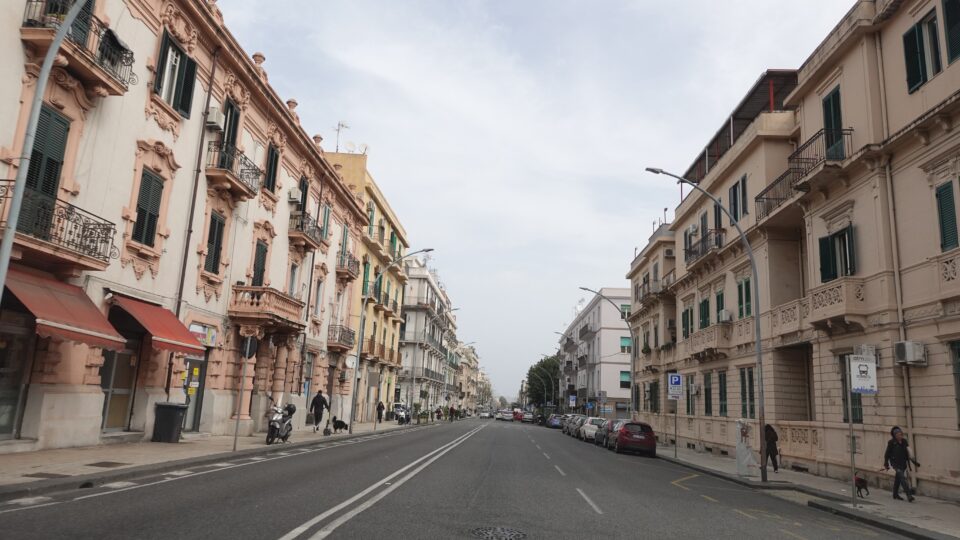
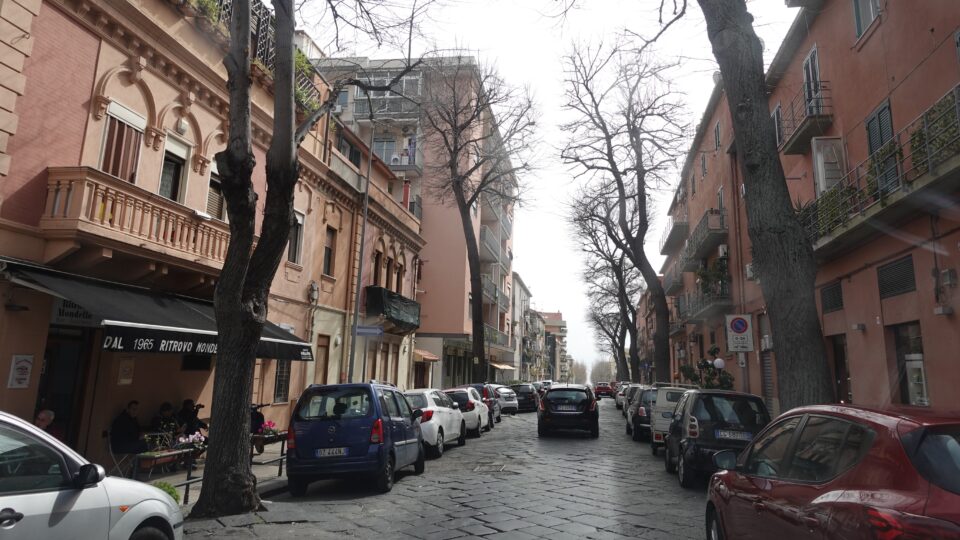
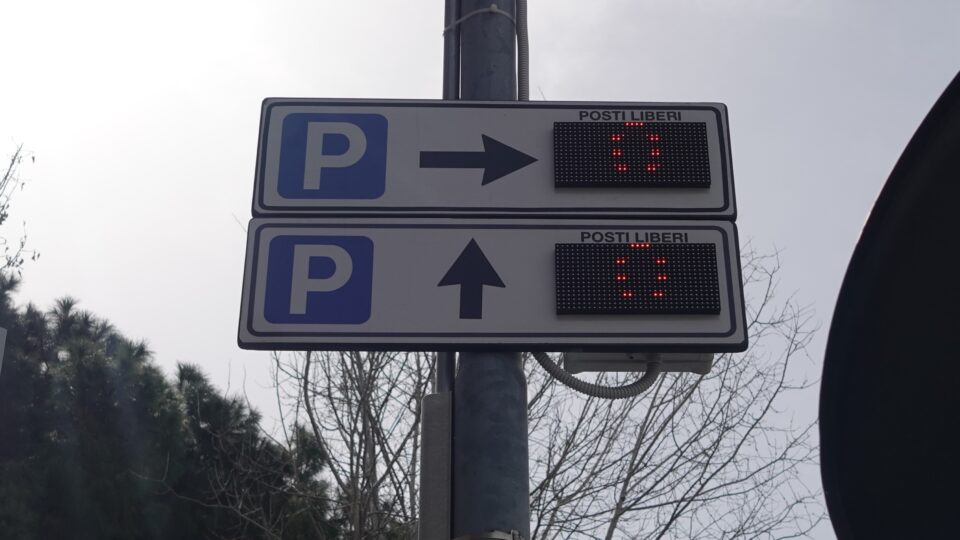
Our first stop was the Rector’s Office at the University of Messina. Founded in 1548, it is one of Italy’s oldest universities and is located in the city center, where the Giudecca once stood. A plaque, installed by the university in the 1970s, marks where the Rector’s Office now stands was once the street on which the synagogue stood.
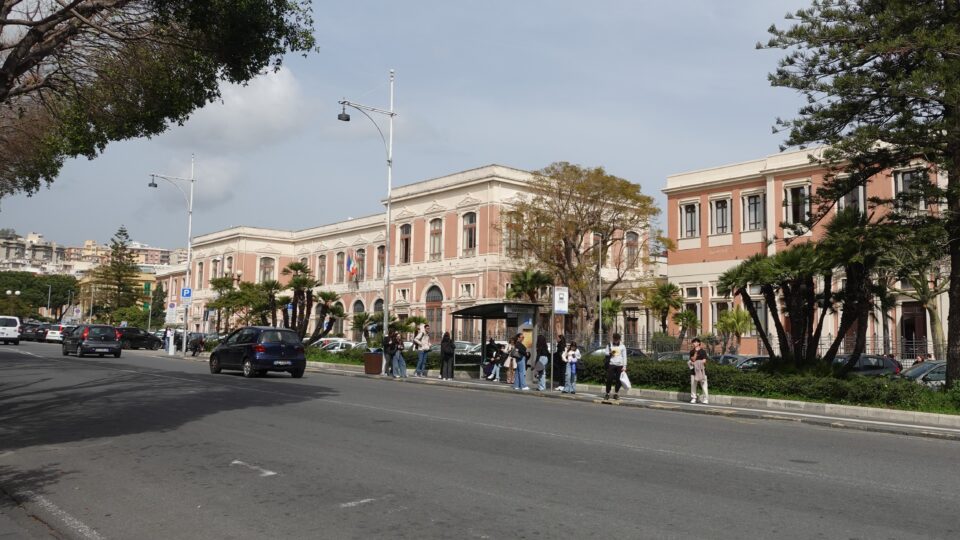

The Rector’s Office was recently renovated, and while we found many plaques, frustratingly the one we were searching for was missing. We asked several people, but no one knew anything about it. Perhaps it was removed during the renovations and never replaced.
Our next stop was the cathedral (Basilica Cattedrale di Santa Maria Assunta), where we did find something—but not something we were glad to see. On the façade of the cathedral, a small marble slab is engraved with the words “Signum Perfidorum Iudaeorum” – Latin for “The sign of the treacherous Jews.” Though the inscription has faded over time, it is still faintly visible.
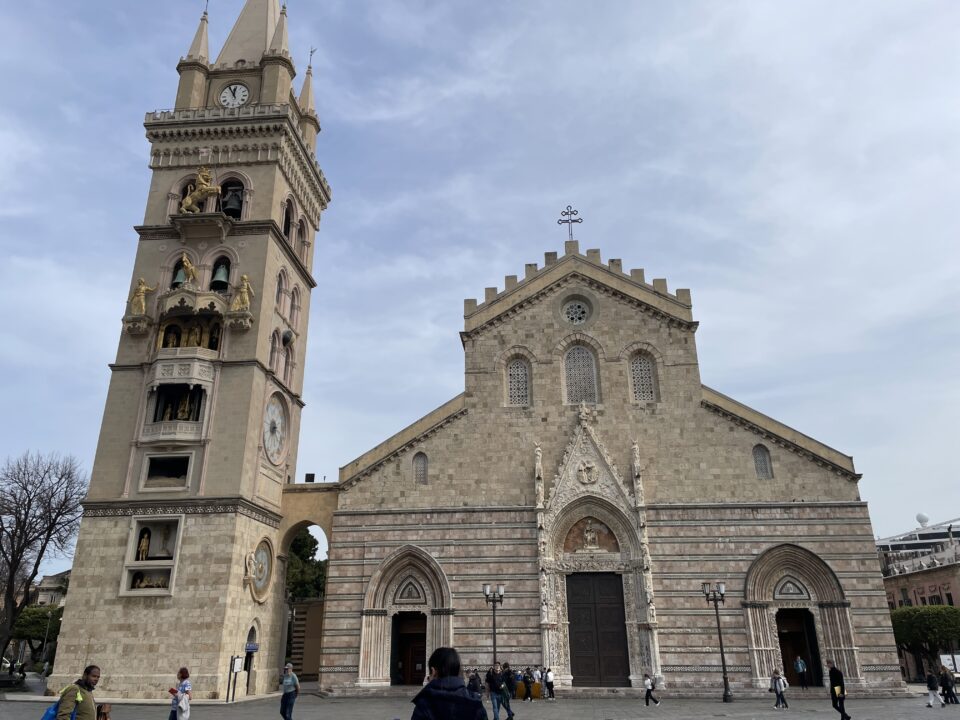
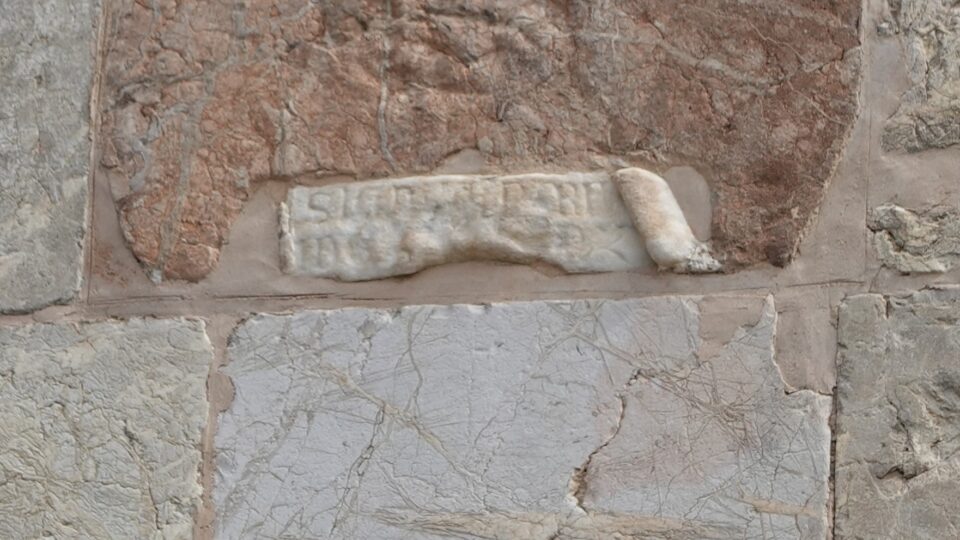

This phrase refers to a medieval legend from Messina. In the late 14th century, a young Christian man left the cathedral and wandered into the Jewish quarter, singing a hymn to the Virgin Mary. According to the legend, this enraged some local Jews, who attacked and killed him. In retaliation, the Christian community stormed the quarter, setting it ablaze and massacring many of its inhabitants. The so-called “Stone of the Jews” was engraved to serve as a permanent warning about the “untrustworthiness” of the Jewish people.
It was almost noon, and we noticed a crowd gathering in front of the cathedral, all eyes on the astronomical clock in the bell tower. Dating back to the late 19th century, this clock is famous for its daily mechanical performance at noon. As the clock struck twelve, the spectacle began: music played as the figures slowly moved into action, the lion roared, and the rooster crowed. The slow-moving show lasted 12 minutes. We had unexpectedly stumbled upon one of Messina’s major tourist attractions.
While watching the show, we also noticed a Star of David decoration on the bell tower, below the lion and above the rooster. Sometimes, symbols like the Star of David were included in Christian buildings to show the city’s mixed cultural history. While the exact reason for its presence in this cathedral’s bell tower isn’t clear, it may be a reflection the city’s diverse religious past. Who knows?
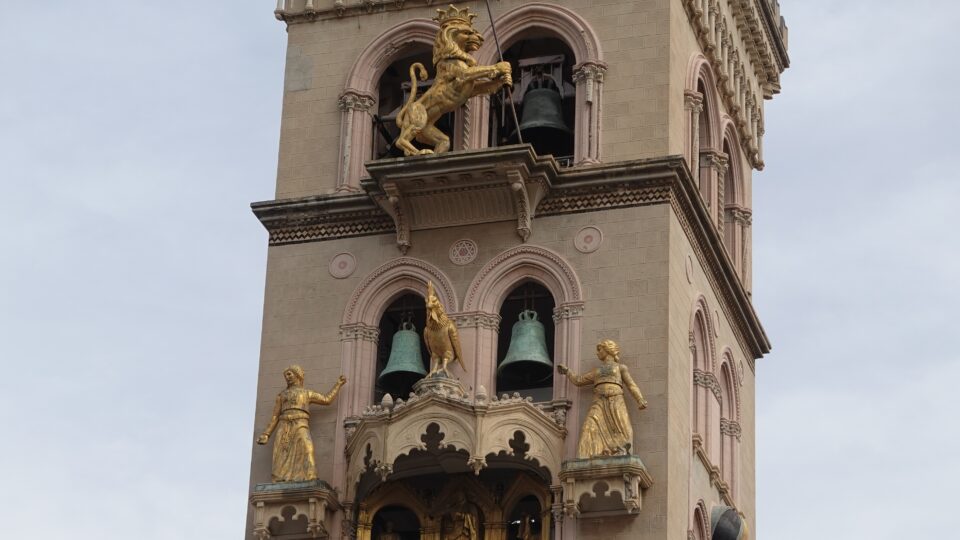
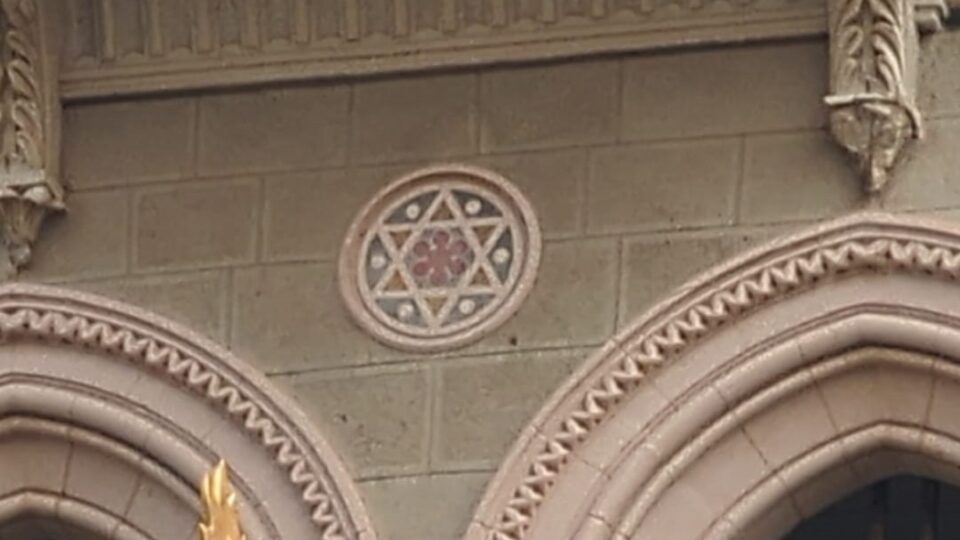
It was now time for lunch, and from the cathedral we walked through the town to Messina’s one and only vegan restaurant, Vegen e Veg. On the way, we passed the port where a huge cruise ship was docked. I had never seen anything so large. This futuristic looking boat was the MSC World Europa. Launched into service in 2022, it has the capacity to accommodate nearly 7,000 guests and more than 2,000 crew members, making it the eighth-largest cruise ship currently sailing.
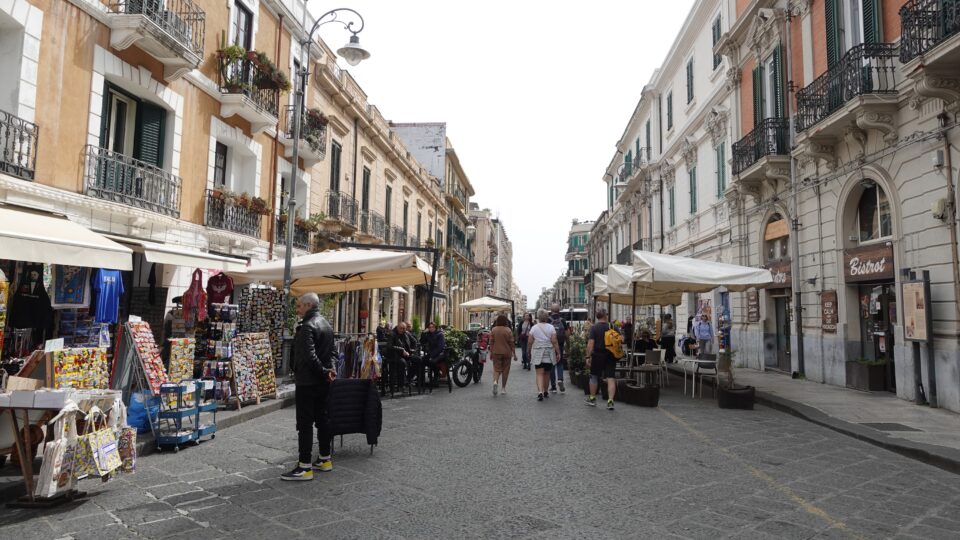
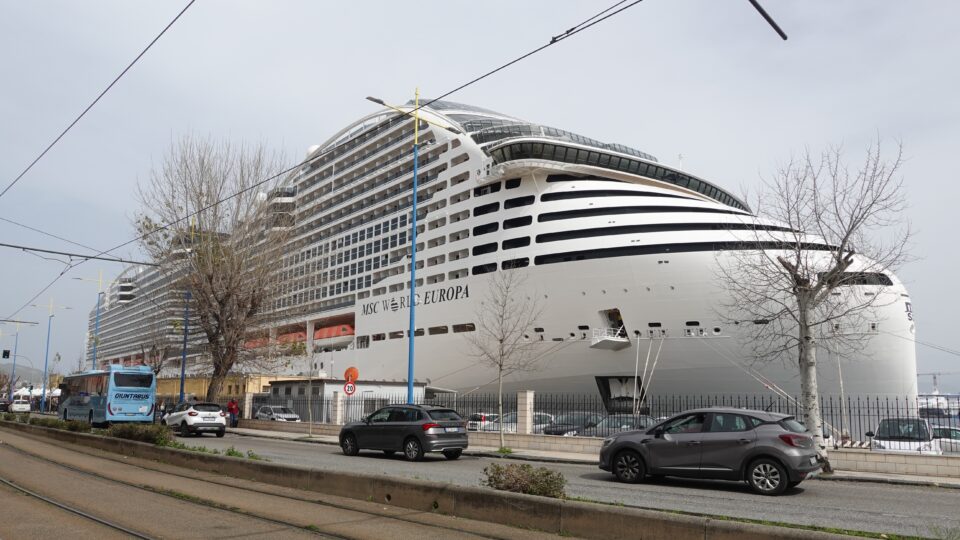
Vegen e Veg was a small place, but had a constant stream of people coming in and out. Lunch was good.
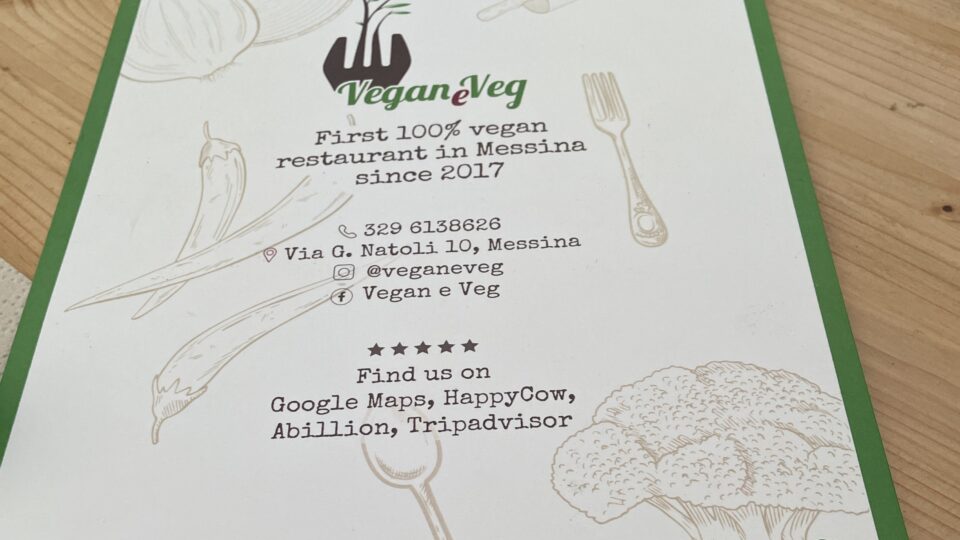

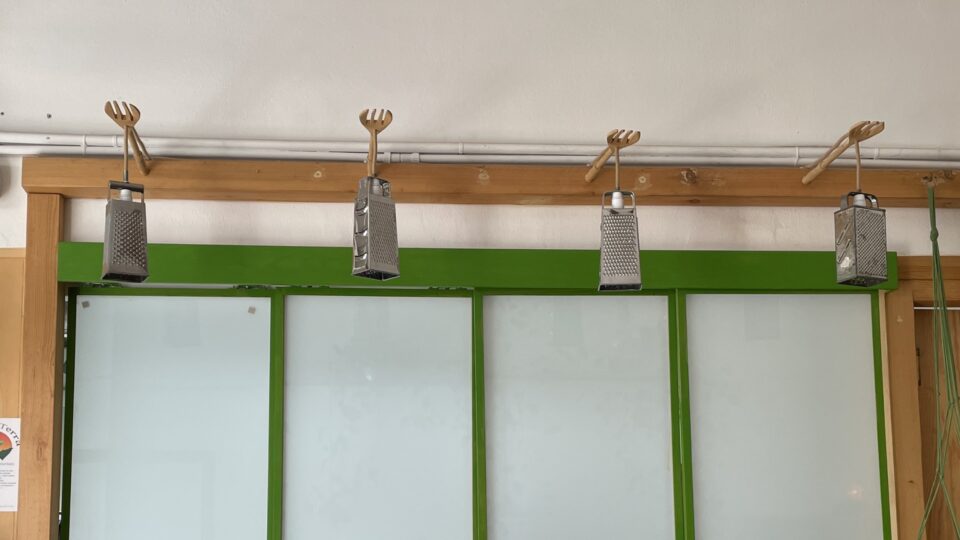
After lunch, we returned to our car. We still had two more places in Messina to drive to. Like in most large cities, we passed some very nice areas and some less so. While driving through a less nice area, we turned the corner and there was a huge building up on the hill. This turned out to be our next destination – the Archdiocesan Seminary St. Pius X, a theological school that trains candidates for the priesthood.
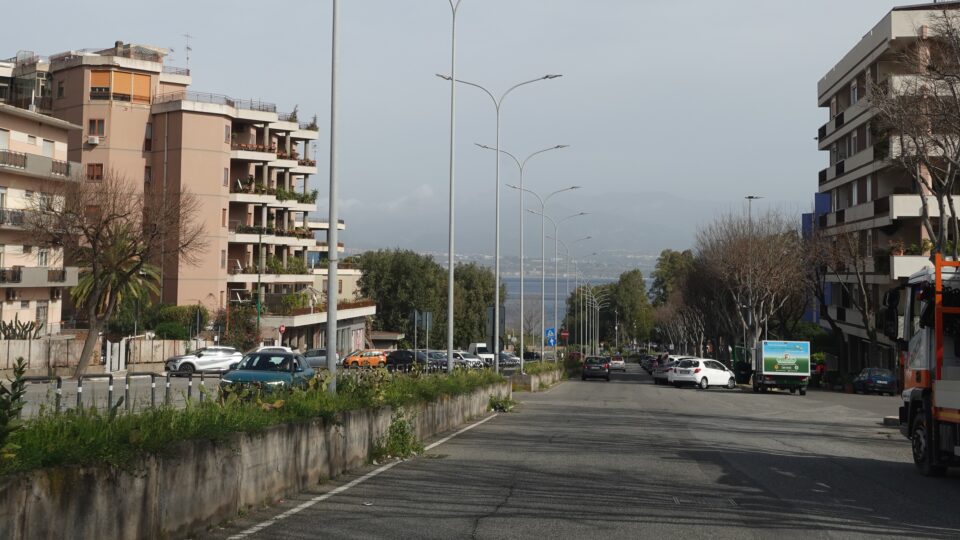
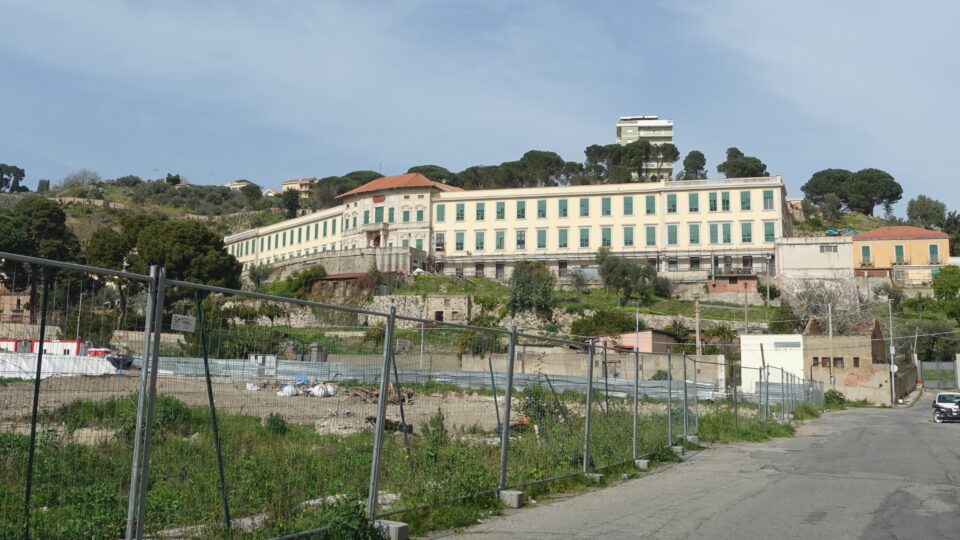
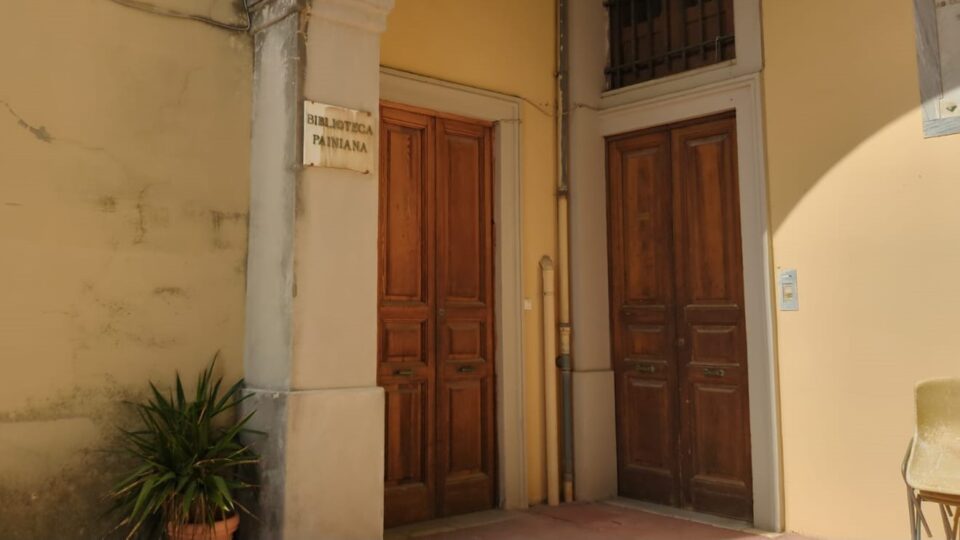
In their library (Biblioteca Painiana), there is a Jewish tombstone commemorating Samuele Finzi. It was bought in the 1930s in preparation for a new museum of Jewish antiquities, that obviously never happened. We found the library locked, and when we asked around, we learned it is hardly ever open. Another frustration.
Our last stop in Messina was the Messina Regional Museum, which houses a collection of archaeological artifacts as well as paintings and artworks. We had come specifically to see a white marble plaque engraved in Judeo-Arabic, the only remaining trace of Messina’s synagogue. Although the museum was open, when we inquired about the plaque, we were told that it wasn’t on general display. It was supposedly available upon request, but our previous emails to the museum had gone unanswered.
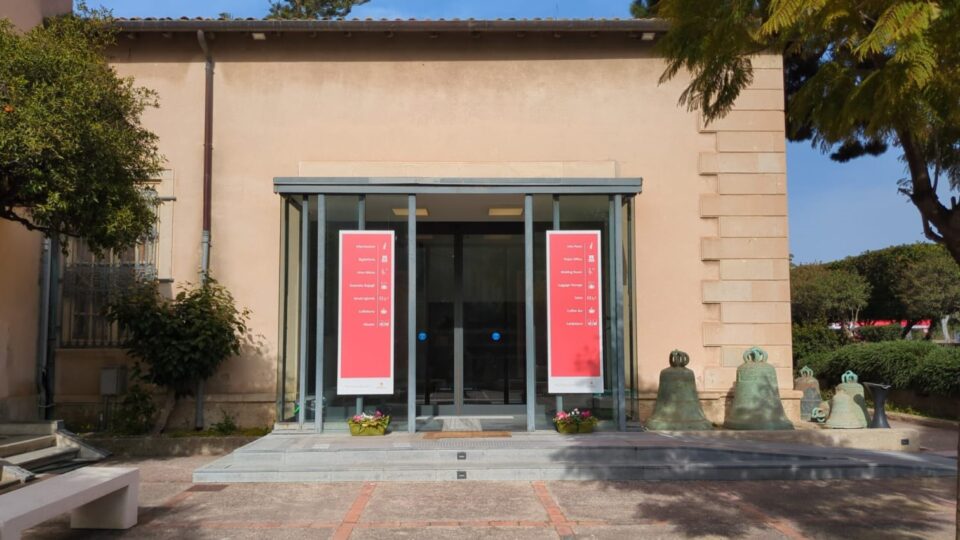
Disappointed, we decided not to enter the museum and continued onward to Milazzo, where we would spend the next couple of nights.
Milazzo is about 40 kilometers west of Messina. The first part of the drive was through the mountains – literally, we were driving through the mountains – in one tunnel after another. Once we reached the northern coast of Sicilty, we once again were on a coastal highway. This time the area between the highway and the sea seemed much more industrial. At the entrance to Milazzo is one of the largest oil refineries in Italy, a huge industrial complex processing crude oil. This was the not charming landscape I had hoped to see here.
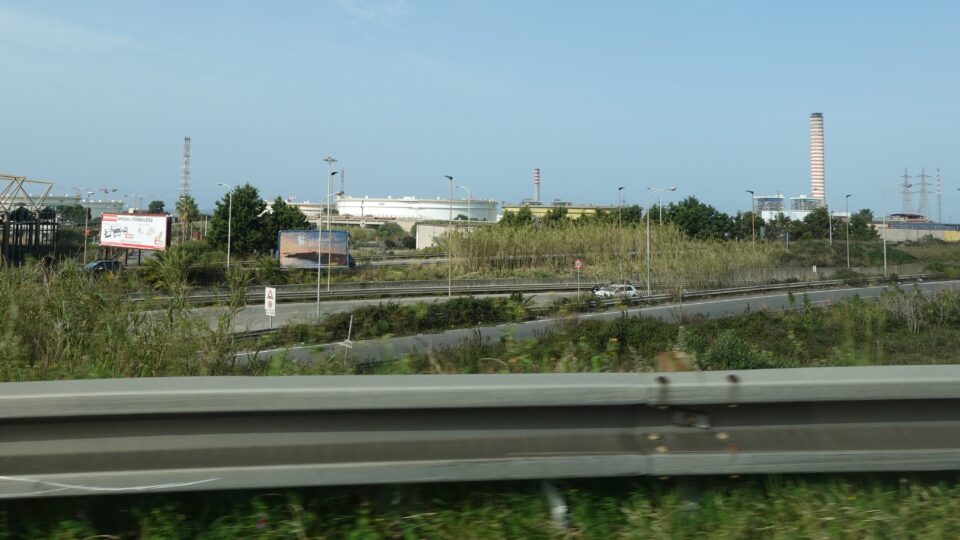
We came to Milazzo because Milazzo is a port city, and tomorrow we have tickets to take the ferry to Lipari, the largest of the Aeolian Islands. Unlike Spain, where almost all our apartment accommodations had lock boxes and self-check in, here in Sicily every time the host meets you to give you the keys. Our host in Milazzo was busy picking up her daughter from school, so we had some time to explore before checking in.
Milazzo is located on a narrow peninsula. On the peninsula is a large hill, home to the Castello di Milazzo. Along the coast, there are beautiful beaches. This changed my perception of Milazzo.
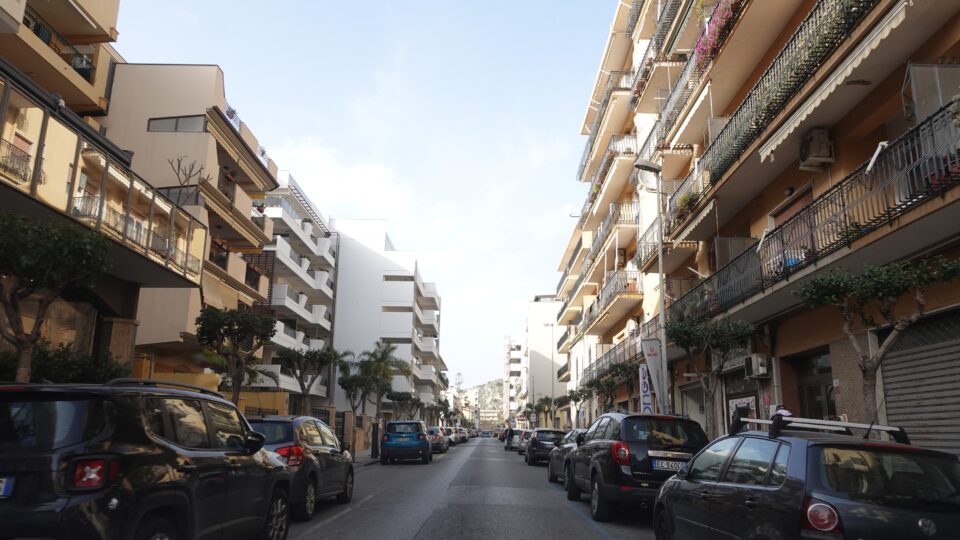
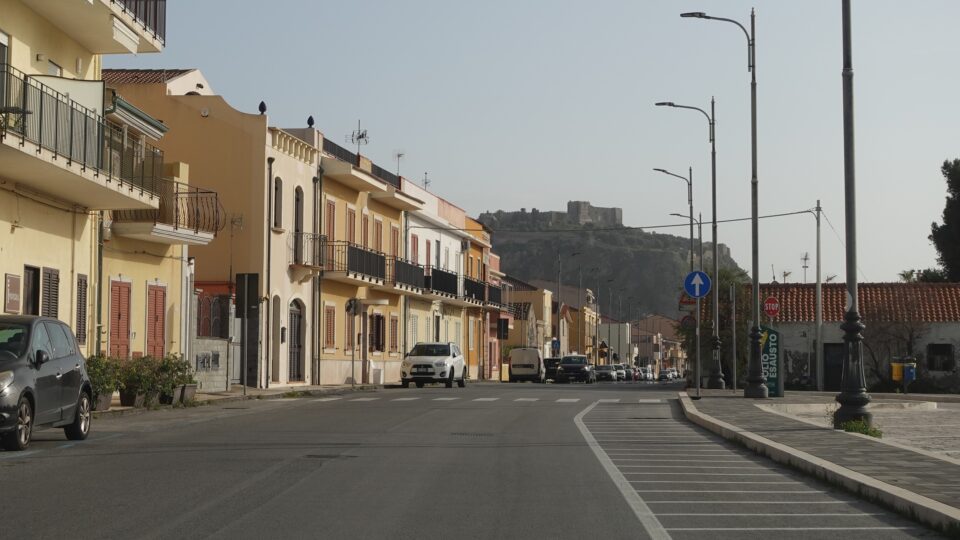
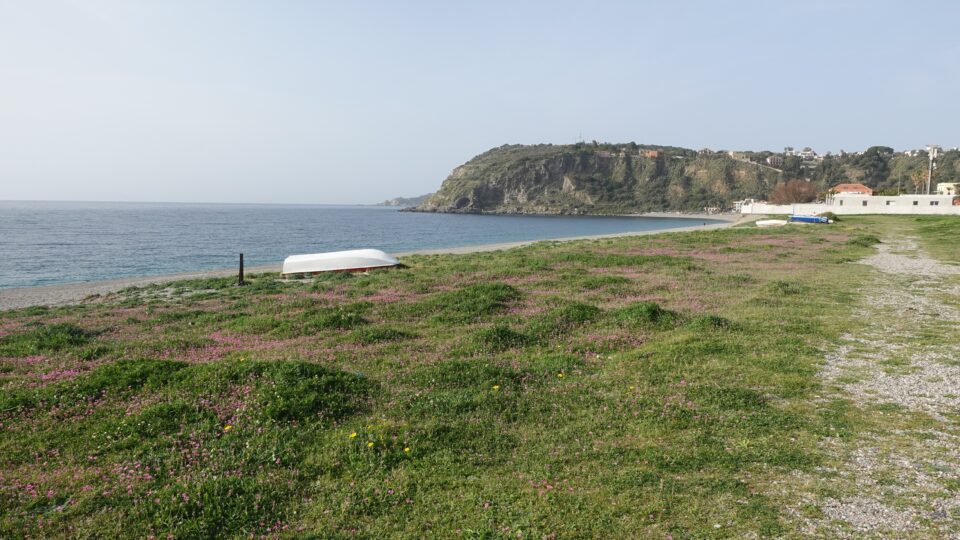
Later in the evening, after settling into our apartment, we drove towards the end of the peninsula and saw a spectacular sunset.
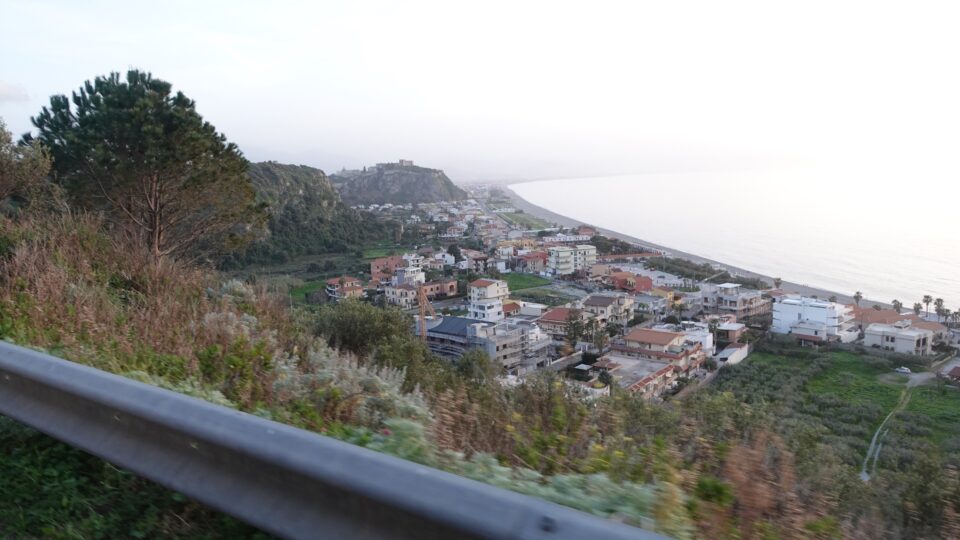
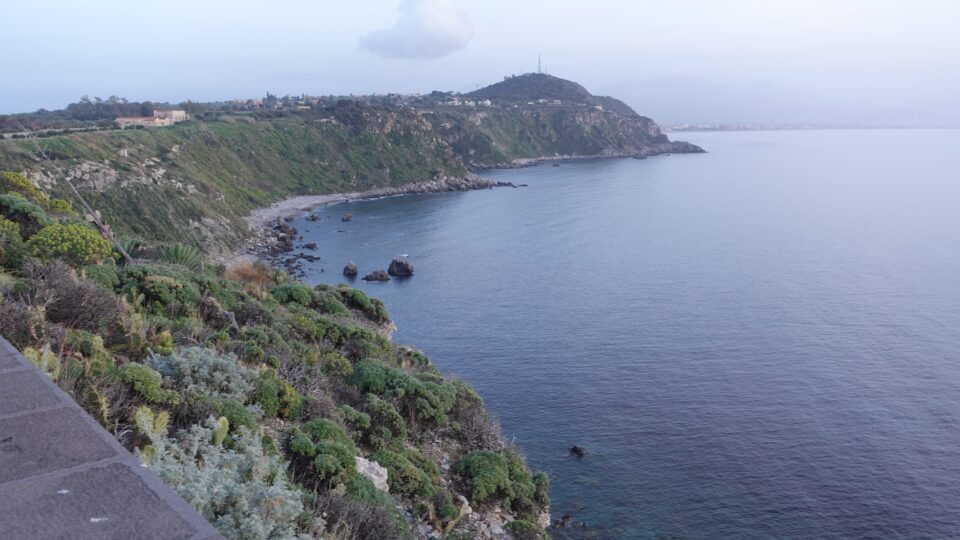
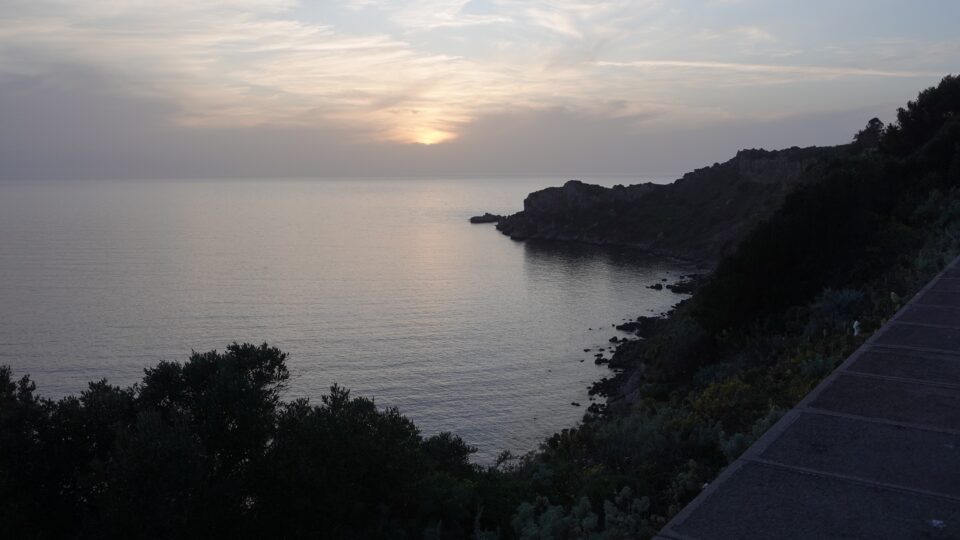
Nature wiped out the frustrations and disappointments from earlier in the day.
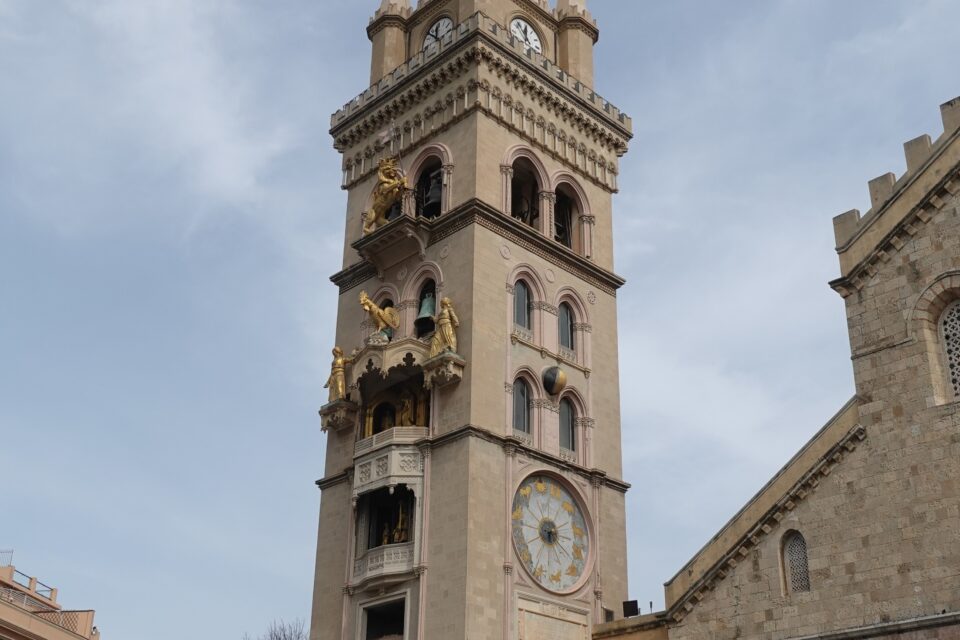
sorry you didn’t find any Jewish sites but the views are nice and restaurant looks good!